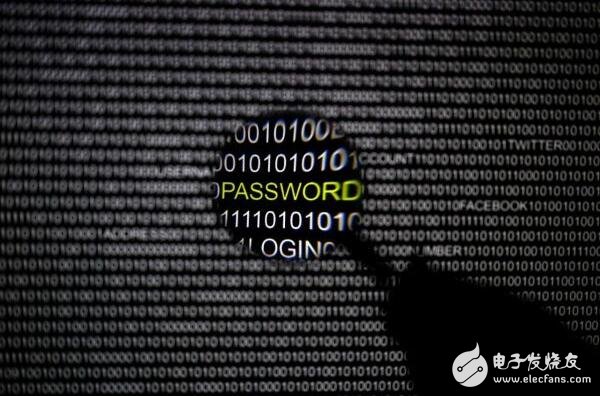Recent reports of large-scale data breaches have shocked everyone. Customers are concerned that their financial and personal information has been hijacked. Threatened organizations are concerned about recent and long-term business impact. Other organizations are worried about whether they will be the next one. But two things are certain. The cost of data breaches will be very expensive and will not be the last time it occurs.
So one big question everyone is asking is, what should I do?

For consumers, if you are shopping at any of the leaked retailers (whether online or in person), the first thing to do now is to call your bank or card issuer and change your credit card. . If you bind your card to autopay other things, this can be a big problem. The next thing to do is to go online and change your password. If you use the same password for many different accounts, please change it now. Finally, start monitoring your information at the main credit reporting agency and report it immediately if anything is wrong.
In addition to those who are individually affected, the question asked today in boardrooms across the country is what organizations can do? How to ensure that these don't happen to them?
Second, the first action to be taken by the affected organizationMany existing security solutions are not sufficient to protect new digital networks. To ensure that you can protect your organization, you need to establish a network and security baseline that you can use. This includes three key elements:
Conduct risk assessment
A thorough risk assessment helps ensure that the critical factors in the business are protected and monitored. For many reasons, a complex network means you may not be able to protect and monitor everything. You need to focus this assessment on the risks that have the greatest impact on your business by continually adjusting security measures and business goals.
2. Implement your security to your network architecture
Network architecture and design usually start well, but over time, the size and complexity of the network grows, either making security solutions less efficient or more complex. Either way, you end up with a network blind spot, asset protection is not enough to meet your security requirements, or, worse, your assets cannot be protected. To fully understand your strengths and weaknesses, it is important to identify these advantages and make effective use and control.
You also need to evaluate the available attack paths for critical data, including link vulnerabilities. This may help you prioritize which vulnerabilities to resolve. There are a variety of frameworks that can be used to guide you, such as ISO, CIS Critical Security Control (SANS Top 20) and NIST Network Security Framework.
3. Identify assets
Networks are growing rapidly and are increasingly spanning ecosystems, from virtualized data centers to cloudy environments. Establishing and maintaining an accurate list of devices can be challenging by increasing the number of endpoint devices connected to the network and the explosive growth of IoT devices. Complex environments do not always provide clear, centralized visibility into their changing infrastructure.
As successful data breaches continue to increase, you may need to invest in tools that can be viewed over the network to identify devices, operating systems, and patch levels. In large environments, you also need to correlate this information with good threat intelligence so that you can view and prioritize the highest risks.
Third, prevent data theft and data leakageOnce you have mastered baseline visibility and control strategies, you need to deploy solutions and strategies that proactively protect critical data and resources from theft and harm. Here are seven key strategies each organization needs to consider:
1. Practice good security
We have been observing vulnerabilities that have been successfully attacked, and these vulnerabilities have been easily obtained in the past few years. While new attacks are a real risk, most are actually caused by attacks of weeks, months, or even years. In fact, the vast majority of attacks target vulnerabilities that have been patched for at least three years, some of which have been for a decade.
Every organization must immediately begin patching each inventory of devices and then establish a formal patching and update agreement. Next, after making sure that the devices you control are patched, you need to make sure that devices that you don't control are properly split, quarantined, or denied access. You also need to identify and replace or remove systems that cannot be patched or protected. Ideally, the entire process requires automation, tracking, and measurement.
2. Combine local and global threat intelligence with SIEM solutions
Advanced Threat Intelligence enables organizations to reduce the time it takes to detect threats and narrow the gap between detection and response. This begins by leveraging threat intelligence that has been collected on your network, which also requires security tools designed to share and correlate information and act in concert.
Local intelligence alone is not enough. You also need a source of threats to stay up-to-date on the latest threat trends and exploits around the world. Transforming this data into actionable intelligence that can be associated with local intelligence and infrastructure may require Security Information Event Management (SIEM) and Web Application Firewall (WAF) technologies that can use data to turn it into actionable policies And even automatically apply it to protect your network.
Of course, distributed, highly resilient networks are also changing. SIEM tools allow you to aggregate data from the entire network, correlate it with local and global threat intelligence sources, and then provide instant details such as compromise metrics and metrics that violate security policies.
3. Deploy signature-based security tools
Because most exploited vulnerabilities are known, attacks against these vulnerabilities can be detected by signature. Signature-based detection tools let you quickly find and block any attempts to penetrate or exploit exploits for known vulnerabilities.
Signature-based tools are also effective in complex environments, such as the zero patch network portion of the Internet of Things and other interconnected devices that cannot be updated, which are increasingly being used by organizations, although they have proven to be highly vulnerable.
4. Add behavior-based analysis and data disinfection
Not all threats have an identifiable signature. Complex attacks can circumvent protection and evade detection. This means you also need advanced threat protection tools such as a dynamically trackable sandbox, disassembling and identifying 0Day malware variants, and associating this data with other security infrastructures. User Entity Behavior Analysis UEBA tools also make it easier to identify internal security threats and find individual perpetrators.
easy to say, hard to do. Attackers also use advanced techniques such as learning and emulating legitimate traffic patterns to evade detection. Security tools not only need to inspect and examine data and applications to find low-profile malware, but also provide in-depth inspection and analysis to find and correlate patterns over time to detect and determine malicious purposes. Where possible, intelligent security systems need to be able to actively and automatically intervene to block attacks before they begin.
A new trend is the Content Disarming and Reconstruction (CDR) tool for data cleansing. The CDR processes the incoming files, deconstructs them, and deletes the active content. This approach enforces zero-day file protection policies by proactively removing malicious content from specific files, preventing accidental loading of connected malware and malicious executables.
5. Shut down the web-based attack vector using the web application firewall
Many threats no longer enter the network through traditional means. Web-based attacks exploit the exponential growth of applications, especially those designed to query and mine information directly in the data center.
Because the demand for self-developed and customized web applications is growing so fast, many organizations simply don't have the time or resources to fully test and harden them before deployment. An effective way to close the gap is to implement WAF. These security devices are designed to provide deep, high-performance inspections that go far beyond web application traffic detection by traditional NGFW technologies.
6. Replace your orphaned point solution
As the network continues to change, the tradition of deploying security devices or platforms at the edge of a network or data center is no longer applicable. Most of these traditional point-safe technologies also tend to run in isolation, which means they can only see and respond to current threats.
But given the nature of today's multi-vector and smart threats, security solutions need to be interconnected into a single, tightly coupled system that can span and adapt to the elastic network architecture. Dynamic integration and correlation provides real-time visibility across the network, which is critical because you can't defend against threats you don't see. In addition, an integrated, coordinated security solution system enables organizations to proactively and intelligently attack cyber attacks as a coordinated system, regardless of where they occur.
Start by looking for tools that share intelligence, such as open APIs, general-purpose operating systems, or unified management tools. The security architecture also interconnects traditionally isolated security tools to enable them to share and correlate information. They also provide centralized coordination, single glass management, consistent policy assignment, and automatic coordinated response to attacks. It also dynamically enhances security and access points, isolates affected devices and malware, identifies vulnerable or compromised systems, and initiates forensic analysis and repair.
7. Segment your network
Given the fluidity of networked ecosystems and the wide range of applications and data flows across multiple networks, establishing and maintaining effective and secure network segments is more important than ever to prevent threats from spreading horizontally across the network. By deploying internal network segmentation firewalls and establishing macro and micro segmentation strategies to prevent the spread of threats, organizations can significantly improve security. Our goal is to create consistent policies and executions deep within the network to manage and protect the horizontal movement of data and applications.
It is especially important to establish segmentation control in the case of collecting and correlating large amounts of data or interconnecting across multiple network environments in a single environment. Such segmentation control facilitates detection of threats that can penetrate the perimeter of a network segment and laterally move attacks. . Without the segmentation and detection tools, these threats are free to collect, destroy and leak data.
Fourth, some things need to changeDespite the alarming scale and frequency of today's data breaches, what the attacking organization suffers is not unique. Too many organizations with highly flexible and adaptable network environments still rely on isolated second-generation security solutions and policies to protect them. However, today's safety is extremely important. It requires a combination of planning, people, and processes with adaptive security technologies that are designed to dynamically scale to today's digital networks, view and coordinate across distributed networks, and automatically respond as a single active defense system to address them Advanced cyber threats.

A solar cell panel, solar electric panel, photo-voltaic (PV) module, PV panel or Solar Panel is an assembly of photovoltaic solar cells mounted in a (usually rectangular) frame, and a neatly organised collection of PV panels is called a photovoltaic system or solar array. Solar panels capture sunlight as a source of radiant energy, which is converted into electric energy in the form of direct current (DC) electricity.
200W Solar Panel,Solar Panel Portable Charger,Folding Solar Portable Power Station With Solar Panel,Folding Solar Panel
suzhou whaylan new energy technology co., ltd , https://www.whaylan.com
